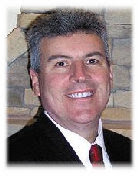If you have no assets or money, then Medicaid (“Medical Assistance”) will usually pay for your care. In the nursing home setting, Medical Assistance covers room and board, pharmacy and incidentals. Basically, Medical Assistance provides for your basic care, but does not cover certain expenses like haircuts, beauty shop charges and clothing. However, if you qualify for Medical Assistance, you can retain sixty-two ($62) dollars per month from your income / social security to meet any of these needs.
Medical Assistance planning is to offset the concerns of seniors regarding the high cost of long term nursing care. Generally, the purpose behind Medical Assistance planning is to make the individual eligible for Medical Assistance, while preserving as much of the individuals resources for the benefit of his or her loved ones. Medical Assistance planning occurs in a pre-planned stage or in a crisis stage. The pre-planning stage occurs when you are expected to enter a nursing home at sometime in the future. Generally, pre-planning techniques include: long term care insurance, gifting, and utilizing trusts. Medical Assistance crisis planning occurs when you enter a nursing home without any planning, and you are not expected to return home or to the community and you are paying the nursing home out of your own pocket. Medical Assistance crisis planning is more common because the majority of seniors are of the opinion that a nursing home stay will never happen to them. When the nursing home stay becomes a reality, you or your family, realizing the cost of nursing home care, will have to address the situation.
To qualify for Medical Assistance, you must be over sixty-five, or blind/disabled and have limited income and assets. If you are a single person, the only assets that you can maintain (non-countable assets) are basically, twenty-five hundred ($2500) dollars, some life insurance and your burial plot. Every other asset is considered available to pay for the nursing home costs (countable assets). Non-countable assets for a married couple are some savings, your home, household goods, a motor vehicle, some life insurance and burial plots. Savings accounts, checking accounts, 401K, pensions and CD's, life insurance policies, in excess of the non countable allowances, second homes, and other motor vehicles are all considered countable assets. Therefore, if you have assets in excess of the resource limitation, you will not qualify for medical assistance. Consequently, you must “spend-down” the excess amounts.
In lieu of giving all your money to the nursing home, you can “spend-down” your assets, with some proper planning techniques such as: purchasing prepaid funeral arrangements, paying off some debts, purchasing a new car and making home improvements. Additionally, the remaining “spend-down” amount can be eliminated through the purchase of a Medicaid Annuity. The Medicaid Annuity is designed to convert the “spend-down” amount into a stream of income. With the “spend-down” amount now eliminated, you become eligible for Medical Assistance benefits.






No comments:
Post a Comment